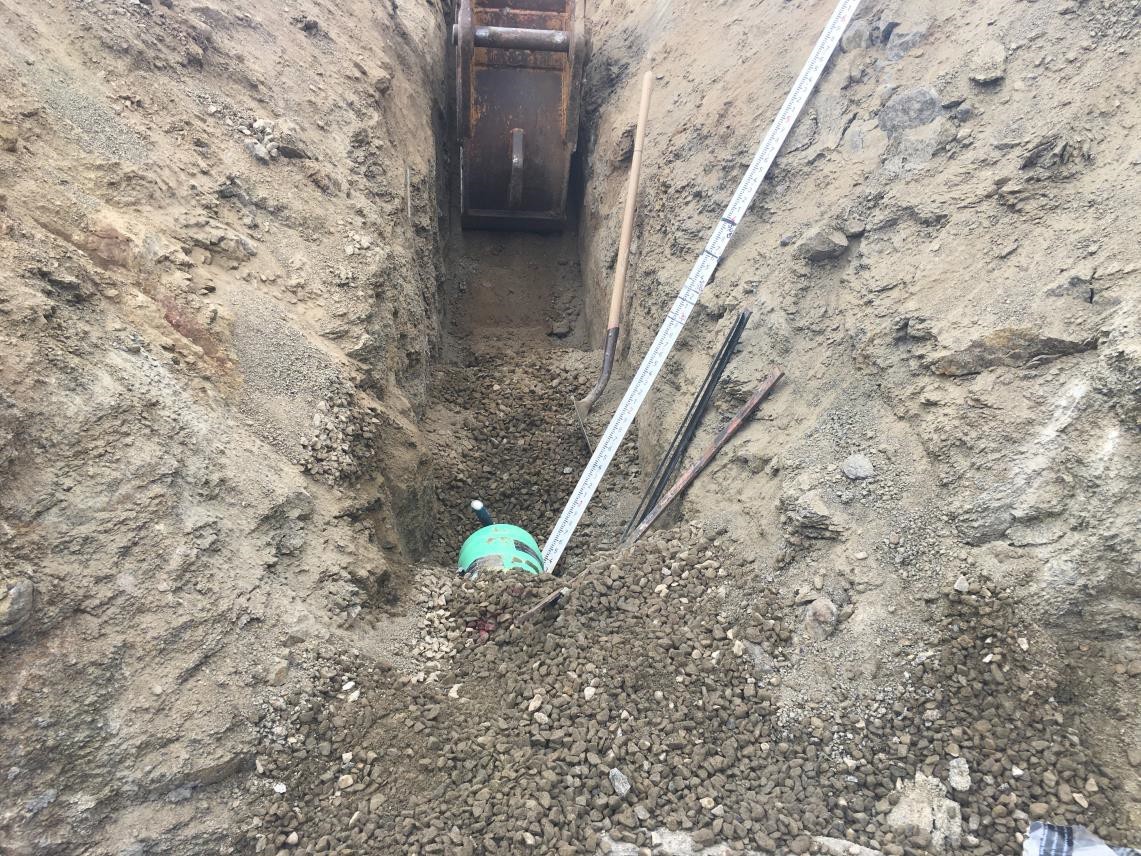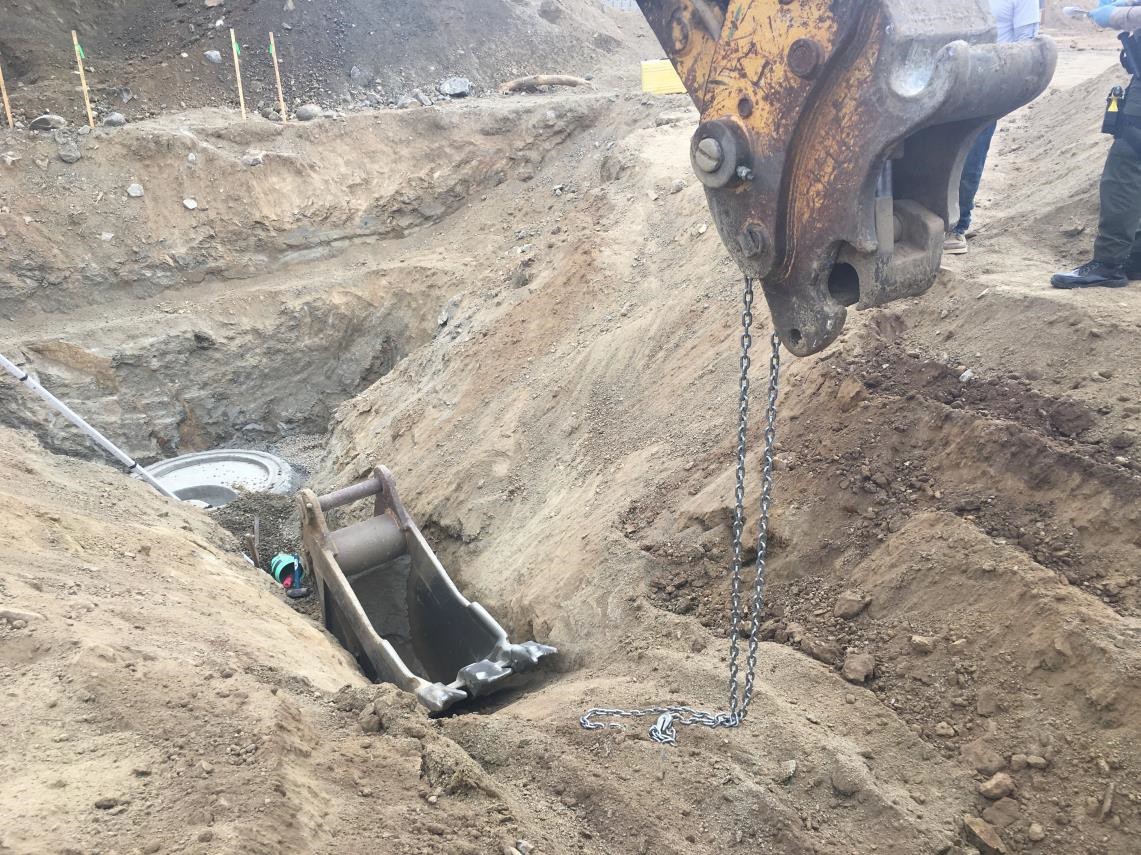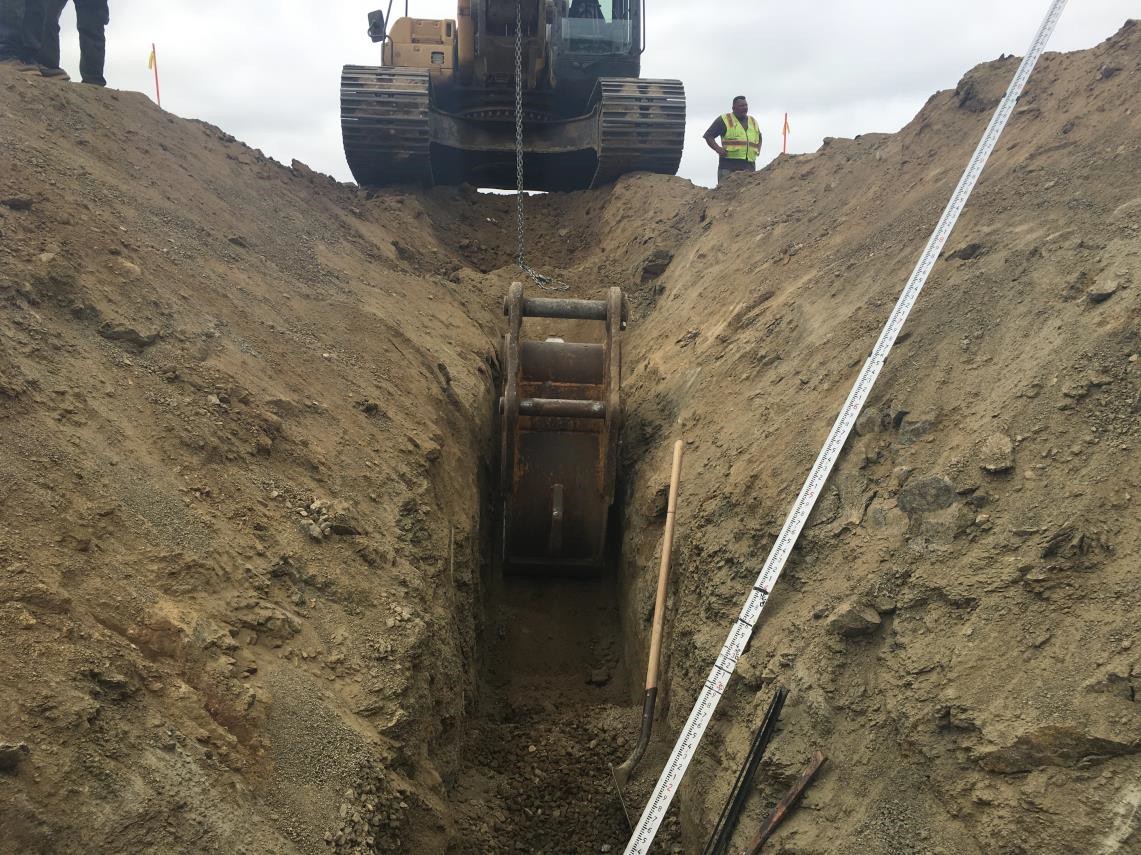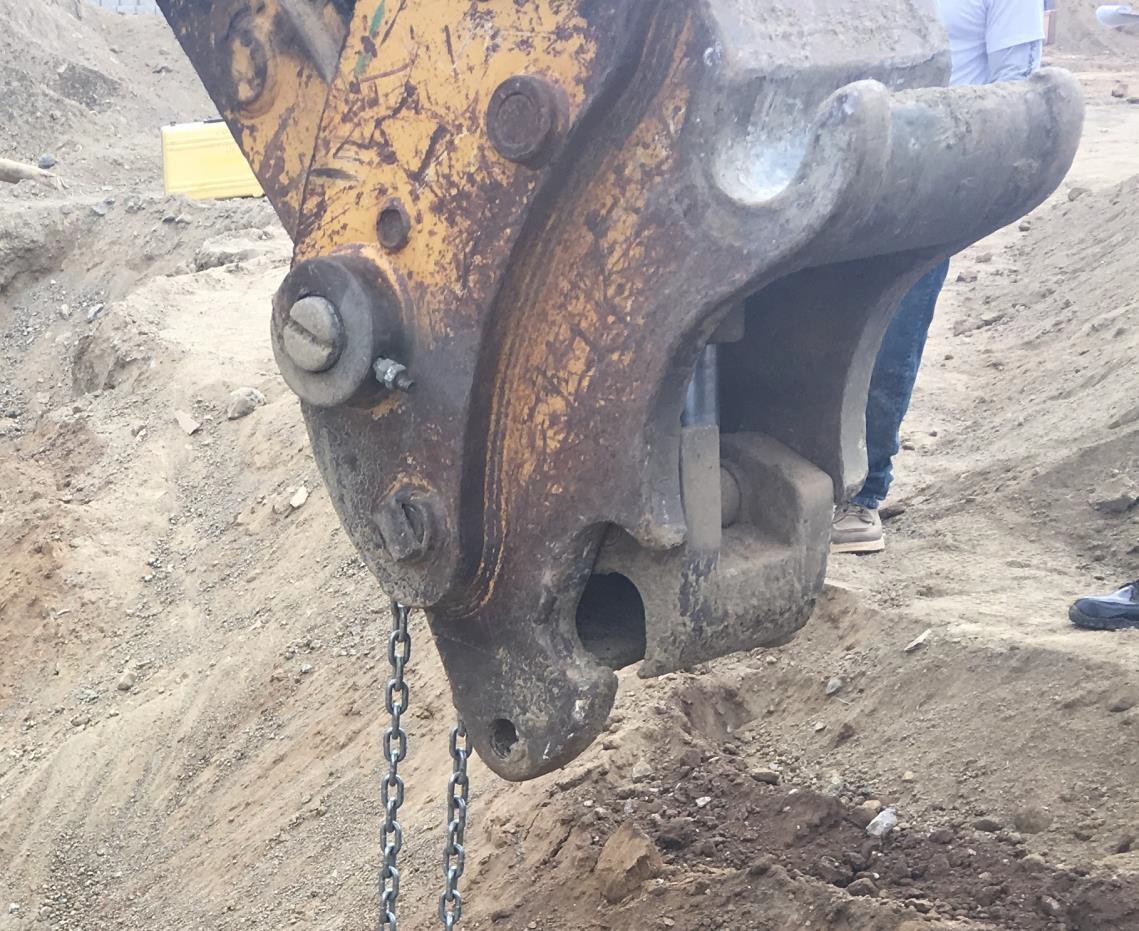Case Report: 20CA002
Pipefitter, working in a trench, died when he was struck by an excavator bucket that detached from a quick coupler
Download a PDF to print this report: Pipefitter, working in a trench, died when he was struck by an excavator bucket that detached from a quick coupler (20CA002, PDF)
Summary
A pipefitter, working in a trench, died after being struck by an excavator bucket that detached from a quick coupling device (quick coupler) that was attached to the end of the boom. The operator of the excavator was curling the bucket into the boom when the bucket came loose and fell on the victim. There was no competent person onsite the day of the incident. The CA/FACE investigator determined that, in order to prevent similar incidents, construction companies who operate excavators should:
-
Maintain and inspect quick couplers to prevent malfunctions that may cause an unintended release of the excavator’s bucket.
-
Ensure that a competent person is onsite to identify hazards and determine all necessary safety precautions, including preventing workers from walking/traversing beneath an excavator boom swing radius or elevated load.
Introduction
On Thursday, June 18, 2020, at approximately 9:30 a.m., a 67-year-old male pipefitter suffered fatal injuries when he was struck by an excavator bucket that detached from a quick coupler. The CA/FACE investigator received notification of the incident on June 23, 2020, from the Cal/OSHA Weekly Fatality Report. On August 24, and September 21, 2020, contact was made with the employer of the victim who was also the operator of the excavator. On October 2, 2020, the CA/FACE investigator traveled to the location where the excavator was stored, and inspected the machine and took photos. The county coroner, fire department, and sheriff’s department reports of the incident were also obtained and reviewed.
Employer
The employer of the victim was a general engineering contractor that specialized in underground sewer and water pipe installation. The employer had been in business for 21 years and had five permanent full-time employees, including the victim. Part-time seasonal employees were hired depending on the workload.
Written Safety Programs and Training
The employer did not have a written safety program. Safe operation of excavators and other heavy equipment was accomplished through on-the-job training (OJT) by supervisory personnel in both English and Spanish. There was no documentation that safety training included struck-by incidents, falling objects, or safety issues related to quick couplers.
Worker Information
The victim was a 67-year-old Hispanic male who was employed as a pipefitter. He had been employed by this company for 15 years at the time of the incident.
Investigation
The incident scene was an outdoor construction site for new homes. The employer was installing underground sewer pipes, and had been at this worksite for six weeks prior to the incident. The only two people onsite the day of the incident were the victim and the employer who was also the operator of the excavator. The excavator machine (330) and quick coupler involved in this incident were both manufactured by Caterpillar (Exhibit 1). Quick couplers are hydraulic devices that are installed at the end of booms by pins that would normally be the mountings for the bucket or attachment. They facilitate the rapid exchange of working tools or buckets.
Exhibit 1. The excavator involved in this incident.
At the time of the incident, the excavator operator was digging an additional trench next to existing underground sewer pipes. The new trench was going to accommodate more pipes that would be tied into the current sewer system (Exhibits 2 & 3). The depth of the trench was approximately nine feet. The deepest four feet were straight-sloped and wide enough to accommodate the new polyvinyl chloride (PVC) sewer pipes (Exhibit 4). The victim was likely in the trench acting as a spotter to signal to the operator where to move the bucket so that it would not damage existing pipe already in the trench.


Exhibits 2 and 3. Alternate views of the trench.

Exhibit 4. Slope and depth of the trench.
After digging a portion of the trench, the operator began curling the bucket (Exhibit 5) when it suddenly detached from the quick coupler (Exhibit 6) and struck the victim. The operator called 911 and used a chain attached to the excavator boom to remove the bucket from the victim. Emergency response personnel arrived on scene and removed the victim from the trench. Despite life saving measures, the victim was pronounced dead at the scene.
 Exhibit 5. Bucket being curled into the end of a boom.
|
 Exhibit 6. The quick coupler attached to the end of the boom.
|